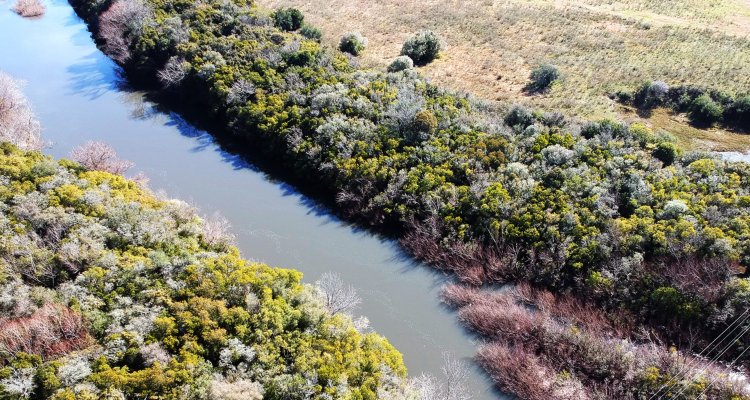
Project
Determining riparian buffer zones based on socio-ecological criteria: The case of Uruguay
A global growing population is driving to land use intensification and nutrient pollution of water courses. According to Steffen et. al., (2015), anthropogenic nutrient enrichment in watercourses is a global problem that is pushing planetary boundaries beyond its threshold, which could lead to extinction of marine species (Steffen et. al., 2015). At the regional level, nutrient enrichment causes eutrophication of riverine and lake ecosystems, which impact negatively on water quality, human health and aquatic biodiversity (Wetzel, 2001; Liu and Chen, 2014). Although there is a wide range of environmental measures how to reduce nutrient pollution, the complexities of the socio-ecologic system make it difficult to effectively implement. In this regard, in this research project focus on understanding the role of riparian buffer zones as a nature-based solution for improving water quality from a socio-ecologic perspective.
Riparian buffer zones (riparian buffers) are vegetated areas adjacent to surface watercourses. They are important for terrestrial and aquatic ecosystems since they regulate the fluxes of sediments and nutrients from land to water, reduce the impact of flooding, sequestrate carbon dioxide, reduce soil erosion and are the habitat for plants and animals of both systems (Riiss et. al., 2020). They have been extensively used as an environmental policy measure to remove nutrients, pesticides and sediments from surface water runoff and improve surface water quality (Sparovek, 2002; Gorsevski, 2008; Zhang et al., 2009; De Sosa et. al., 2018). However, the existing trade-offs between riparian buffers and the agricultural area makes it difficult to determine their boundaries and define an appropriate policy design. In this regard, the project has four specific objectives that analyzes riparian buffers from different perspectives: cost-effectiveness for water quality; distributive impacts on farmers; farmers’ perception of riparian vegetation and policy design; and the non-market value of the ecosystem services provided by RBZ.
This research project is conducted by Guillermo Sena under the joint supervision of Prof.Dr. Francisco Alpizar (Environmental Economics and Natural Resources Group) and Dr. Milena Holmgren (Wildlife Ecology and Conservation) from WUR and Dr. Miguel Carriquiry from Universidad de la República, Uruguay.